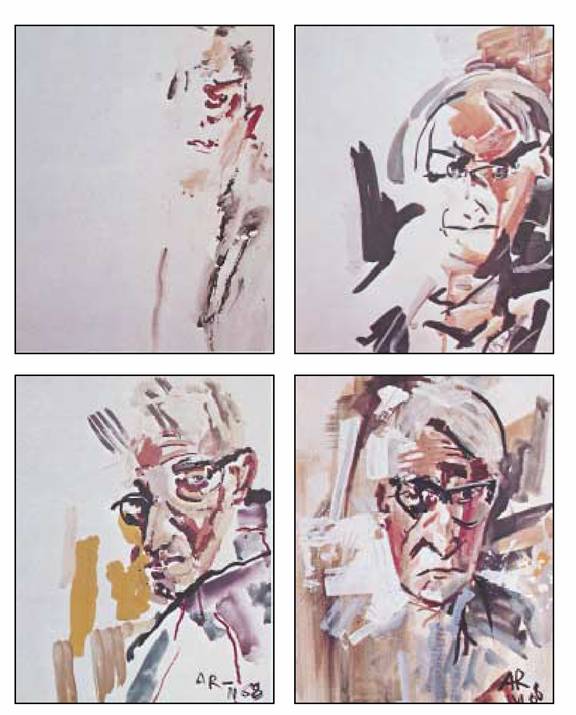
LinKs to relevant WEB sites
Association Areas
The Invisible Gorilla by Chris Chobris & Daniel Simons
More examples of change blindness from Rensink
Talking on your cell phone can cause inattentional blindness.
The part of the brain needed to make safe left-hand turns largely shuts off during a cellphone conversation — even if the phone is a hands-free device, a group of Toronto researchers have found.
A patient with visual agnosia.
Split brain behavioral experiments.
In this RSAnimate, renowned psychiatrist and writer Iain McGilchrist explains how our 'divided brain' has profoundly altered human behaviour, culture and society.
Jill Bolte Taylor got a research opportunity few brain scientists would wish for: She had a massive stroke, and watched as her brain functions -- motion, speech, self-awareness –- shut down one by one. An astonishing story.
These self-portraits,
by the German artist Anton Raederscheidt, were painted after a stroke that
damaged the cortex of his right parietal lobe. As his brain recovered, his
attention to the left side of his world returned (Wurtz, Goldberg, &
Robinson, 1982).

Also read Wurtz RH, Goldberg ME, Robinson, Brain mechanisms of visual attention. Sci Am 1982 Jun;246(6):124-35.
Left Neglected by Lisa Genova is a great book dealing with the results of a traumatic brain injury that completely erases the left side of a patient's world.
Vilayanur Ramachandran gives a TED talk about the Capgras delusion.
Neurologist and author Oliver Sacks, author of best-selling case histories as Awakenings a book and movie, brings our attention to visually impaired people who experience lucid hallucinations.
Henry Markram is director of Blue Brain, a supercomputing project that can model components of the mammalian brain to precise cellular detail. This Ted Talk shows beautiful animations of the brain's complex structure.
H. M., an Unforgettable Amnesiac, Dies at 82. The Man Who Couldn't Remember Posted on NOVAVeNOW
Still Alice is a compelling debut novel about a 50-year-old woman's sudden descent into early onset Alzheimer's disease, written by first-time author Lisa Genova, who holds a Ph. D in neuroscience from Harvard University.
The Amazing Case of Phineas Gage. Gage's story was the historical beginnings of the study of the biological basis of behavior (Antonio Damasio.)
Ben Goldacre: What doctors don't know about the drugs they prescribe. Why should be skeptical about some findings in science.
The strange and curious history of lobotomy. Read about this brutal procedure which became a relatively common clinical tool just 50 years ago. Are there current treatment that will be considered just as unacceptable in the next 50 years?
Informative Utube video by CBC's Shelagh Rogers about her unipolar depression on receipt of her CAMH (Centre for Addiction and Mental Health) Transforming Lives Award.
Hear 5 excellent lectures by V. S. Ramachandran, Neurosciences Program at the University of California, San Diego on three neurological syndromes: Phantom limbs, Capgras' delusion (after head injury a patient starts claiming their mother is an imposter) and pain asymbolia (a patient feels the pain but it doesn't hurt). From the BBC. Click here.
The three lobes of the brain in 3D.
Research over the last decade has produced growing evidence that the adult human brain creates new neurons, a process known as neurogenesis.
A good update on fMRI imaging.
|
Tutis
Vilis |
Last updated
April 2, 2013
|